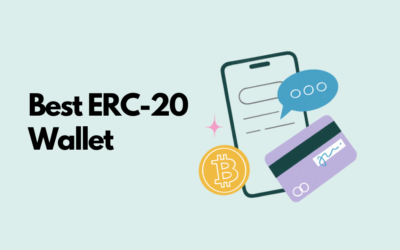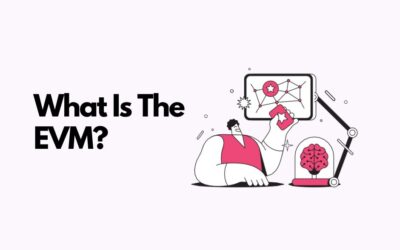Solidity is an incredible programming language that opens developers up to the world of smart contracts. There are specific steps to learn Solidity that new developers should follow.
If you have zero programming knowledge, we recommend starting with JavaScript first before diving into the world of smart contracts.
We’ve broken them down in to 5 simple things you can do in order to learn Solidity FAST…
Familiarize yourself with the Ethereum blockchain.
Before diving into learning Solidity, it can be helpful to have a basic understanding of the Ethereum blockchain and how it works. This will give you a better context for why you might want to use Solidity to write smart contracts, and will also help you understand the constraints and limitations of the Ethereum platform.
Ethereum is a decentralized, open-source blockchain platform that enables the creation of smart contracts and decentralized applications (DApps). It was created in 2015 by Vitalik Buterin, a Russian-Canadian programmer and co-founder of Bitcoin Magazine.
The Ethereum platform is powered by a cryptocurrency called Ether (ETH). Like Bitcoin, Ether is a digital asset that can be bought, sold, and traded on online exchanges. However, unlike Bitcoin, which was designed primarily as a peer-to-peer electronic cash system, Ethereum was built to be a decentralized platform for running smart contracts and DApps.
Smart contracts are self-executing contracts with the terms of the agreement between buyer and seller being directly written into lines of code. They are designed to facilitate, verify, and enforce the negotiation or performance of a contract. DApps are decentralized applications that run on a blockchain and are not controlled by any single entity.
The Ethereum blockchain is a decentralized, distributed database that maintains a continuously growing list of records called blocks. Each block contains a record of multiple transactions, and once a block is added to the chain, the transactions it contains are considered to be permanently recorded and cannot be altered. The Ethereum blockchain is secured through a consensus mechanism called proof-of-work (PoW), which involves miners competing to solve complex mathematical problems in order to validate transactions and add new blocks to the chain.
Install a Solidity Compiler
In order to write and compile Solidity code, you will need to install a Solidity compiler on your computer. There are several options available. You can deploy contracts directly in Remix.
As you get more experience, you’ll want to build and run contracts on your local machine. That’s when you’ll want to install solc, a command line compiler for Solidity.
The solc compiler converts Solidity code into bytecode, which can be deployed and run on the EVM. It also generates application binary interface (ABI) definitions, which specify the interfaces and functions of the smart contract and how they can be called by external applications or other contracts.
Solc is an important tool for developers who are building applications on the Ethereum platform. It allows them to write, test, and deploy smart contracts on the Ethereum blockchain, and to interact with those contracts using external applications or other contracts.
To use solc, you will need to install it on your computer. It is available as a command-line tool and can be downloaded from the Solidity website or installed using a package manager like npm (Node.js Package Manager). Once installed, you can use solc to compile Solidity code by running the solc command followed by the Solidity file you want to compile.
Learn the basics of Solidity syntax
Once you have a Solidity compiler set up, you can start learning the basics of Solidity syntax. This includes things like data types, variables, control structures, and functions. There are plenty of resources available online to help you get started, including tutorials and documentation.
Ethereum is a decentralized, open-source blockchain platform that runs smart contracts: applications that run exactly as programmed without any possibility of downtime, censorship, fraud, or third-party interference. These smart contracts are written in a high-level programming language called Solidity, which is similar to JavaScript and is used to create contracts for voting systems, financial exchanges, crowdfunding platforms, and other applications that require secure and transparent processing.
Ethereum is a decentralized platform that runs smart contracts: applications that run exactly as programmed without any possibility of downtime, censorship, fraud or third-party interference.
The Ethereum platform is powered by Ether, a cryptocurrency that is used to pay for the computational resources needed to run applications on the platform. Ethereum was proposed in 2013 by Vitalik Buterin, a young programmer who was involved in the development of Bitcoin. However, he believed that Bitcoin’s design was too limited to support the wide range of applications that he had in mind, so he decided to create a new platform that would be more flexible and powerful.
Ethereum has since become one of the most popular and widely used blockchain platforms, and it has inspired the development of many other blockchain-based projects and applications.
Practice writing simple smart contracts
As you learn more about Solidity, try writing some simple smart contracts to get a feel for how the language works. This could include things like a simple contract to store a value on the blockchain, or a contract that allows two parties to exchange tokens.
A very simple contract you can write is an ERC-20 token.
You’ll want to familiarize yourself with Truffle or Hardhat to make contract development easier. We recommend starting with Hardhat.
Explore more advanced concepts
As you become more comfortable with the basics of Solidity, you can start exploring more advanced concepts such as inheritance, data structures, and contract testing. There are also a number of tools and libraries available that can make it easier to develop more complex smart contracts.
You’ll also be able to build more advanced games, DeFi applications, and secure escrow contracts.
Learning Solidity can be a challenging but rewarding process.
Once you understand the basics of smart contracts, Solidity is a fairly easy language to learn.
By following these steps and staying up to date with the latest developments in the Ethereum ecosystem, you can become proficient in this powerful language and start building your own decentralized applications.








0 Comments